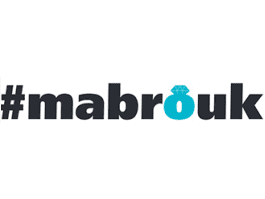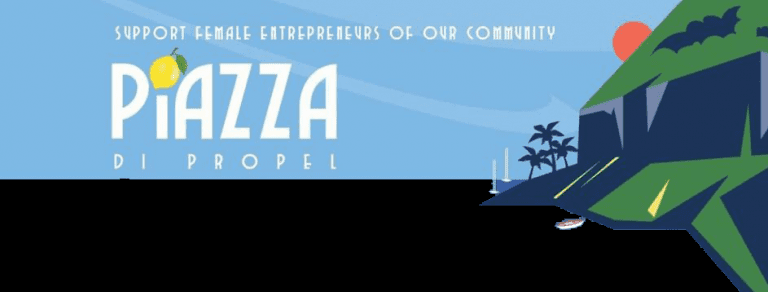Some of us may feel apprehensive. As the weather turns cooler and summertime becomes a season past, Rosh Hashanah and Yom Kippur are weeks away. Another year is upon us, and the usual holiday preparations lead us to supermarkets, butchers, and clothing stores. Soon our minds become consumed as we think about how we will set our tables, what delicacies we will serve, and what to wear when the holidays come.
But we may – and should – also have a nagging feeling within, reminding us that the Day of Judgment will soon arrive, when our individual and national fates will be decided and everything hangs delicately in the balance. As the days rush by us at a dizzying speed, it becomes exceedingly difficult to pull away from the preparations that must be done in order to take a spiritual accounting of our lives.
We may find that we’re so busy that we arrive at Rosh Hashanah without a game-plan for how to grow over the course of this critical season. Yet Hashem, in His infinite wisdom, has embedded within the Jewish calendar the Aseret Yeme Teshuvah – the Ten Days of Repentance, from Rosh Hashanah through Yom Kippur, which give us that extra chance to improve ourselves. They are days of growth, change, and introspection that afford each Jew the opportunity to take a few steps back and contemplate his or her spiritual standing. This is the time to take stock and become more keenly aware of who we are in relation to who we can be.
In order to help ensure the success of this lofty undertaking, we present here 10 steps that we can take during these 10 special days, climbing rung by rung, one day at a time, up the spiritual ladder towards greatness.
Step 1: Think Long Term
Too many people go through life without ever contemplating exactly what it is they want out of it. The truth is that life is relatively short, and it is therefore incumbent upon each of us to go through it with specific goals in mind. When we’re clear about what our life goals are, we can make sure that our daily actions are geared toward achieving them. On the other hand, if our idea of what we want out of life is hazy, it’s easy to get sidetracked.
It may be difficult to think about, but it is important to ask yourself questions that will clarify what you want your life to look like. What do you want people to say about you after 120 years? Would you like to be remembered as a kind, patient, compassionate, and thoughtful person? Or would you be happy to be remembered as the one who wore the latest styles, owned the newest gadgets, and knew the top news every hour on the hour?
Step 2: The Business Plan
Once you know your long-term goals, you can think about how you’ll achieve those goals. If you want to stop gossiping, or aspire to be more patient, how do you plan on getting there?
Imagine that you own a business and want the bank to grant you a loan. Before you approach the bank manager, you would do everything in your power to develop a clear business plan that demonstrates how you would use any resources you’re granted to ensure the continued growth and success of your business.
So too, we are coming to Hashem during this time of year and asking Him to grant us a long life filled with blessings. What’s our plan for using the resources He gives us to do His Will and make the world a better place?
Step 3: One Small Step
Rather than jumping into growth headfirst and improving everything all at once, it’s important to be realistic. Time and again, we fool ourselves into thinking we can become perfect overnight. It’s like going to the gym, lifting the 100-pound weight and collapsing. Obviously, it’s not possible to gain muscle in an instant, and a person who takes on more than is reasonable will burn himself out.
The only way to be able to lift the 100-pound weight is by beginning with the lightest weights and working our way up from there. The same is true with spiritual muscles. Oftentimes, our evil inclination convinces us to do everything at once because he knows it will be impossible for us to keep it up. We must be realistic with ourselves and be careful not to bite off more than we can chew. The important thing to remember is that the idea is progress, not perfection. Choose one or two areas to improve in, and move towards your goal with baby steps.
Step 4: The Wedding Photo
Once you choose one or two areas in which to improve throughout the year, know that the Ten Days is a time to behave with extra stringency. During these days, dress more modestly than usual, adhere to a stricter standard of kashrut, and say extra Tehillim. Do extra even if you know you won’t be able to keep it up throughout the year.
“What’s the point?” you may ask yourself. “Who am I fooling?” Rabbi Dovid Orlofsky shared an amazing message through a powerful parable. Imagine it’s the dead of winter. You’ve been sitting in bed all day, until you finally pull yourself out of bed, and as you catch a glimpse of yourself in the mirror, you notice that you look like a complete mess. You put on big fluffy slippers and shuffle to the living room. And then you see it – your wedding picture on the mantle. You begin to look closely at the picture, and notice that this is you at your best. With a little extra effort, this is who you can be.
Similarly, we take upon ourselves additional measures of stringency during these Ten Days to give ourselves a picture of what we look like at our best. We let ourselves know just how great we can become to inspire us to inch closer toward that ideal.
Step 5: Know Yourself
We each come down to this world to fulfill a particular mission. One part of this mission is related to our individual strengths. During these days, reflect upon your talents and figure out how you can use them to better the world. Hashem gave you your particular set of gifts for a reason. Try to discover what that reason is.
The other part of this mission relates to our weaknesses. Refusing to fall into the traps that our weaknesses create for us enables us to achieve greatness. If you struggle with anger, anxiety, laziness, or any other negative character trait, every time you desist from negative behavior you ignite a powerful spark of holiness that helps illuminate the world.
Step 6: Hold Onto Prayer
In his article, “How to Get Your Prayers Answered,” Rabbi Noach Weinberg, zt”l, wrote: “To pray properly, you have to understand that not only Gd loves you, but His love for you is infinite… If we appreciate what Gd can do for us, it is crazy not to stay in touch.” The Ten Days, when we are asking Hashem to grant us life and blessing, is the most opportune time to harness the power of prayer.
Recognize that Hashem is our Father in Heaven. He is infinitely powerful, infinitely knowing, and infinitely loving. He has all the resources we need for a good year. Speak to Hashem in your own words. Thank Him for all that He has done for you, and continues to do for you. Ask Him to bless you with life and blessing, and know that He will give you all that you need.
Step 7: Act Charitably
Reach beyond yourself and give to others. Give charity and act charitably toward those around you. Tzedakah has the power to mitigate or even change a harsh decree, so now is the time to be especially kind and generous to others.
Step 8: Study Torah
The Torah is our guidebook for living a successful and productive life. Now’s the time to immerse ourselves in Torah to be reminded what Hashem expects from us and to receive the keys for a good life that He offers us. Suggested areas of study are the laws of Shabbat, laws of lashon hara (negative speech about other people), and works of mussar (general religious instruction).
Step 9: Be Grateful
Sometimes it’s easy to get caught up in negativity and constantly think about what we don’t have. Practicing gratitude every day allows us to revel in all the blessings that Hashem constantly showers upon us. A Jew wakes up in the morning and immediately says, “Modeh Ani,” thanking Hashem for life. We have eyes, ears, health, hands, feet, food, and clothing, and that’s just the tip of the iceberg. Take a little bit of time to make a list of all that you have to be grateful for, and review it constantly.
Step 10: Trust
Finally, have faith in Hashem. Trust in Hashem’s benevolence and kindness. Be optimistic, and know that Hashem is the ultimate Redeemer and will judge us favorably. All that is required of us is to be the best us we can be.
May Hashem lovingly accept all of our good deeds and growth, and grant us a good and sweet new year, amen.











